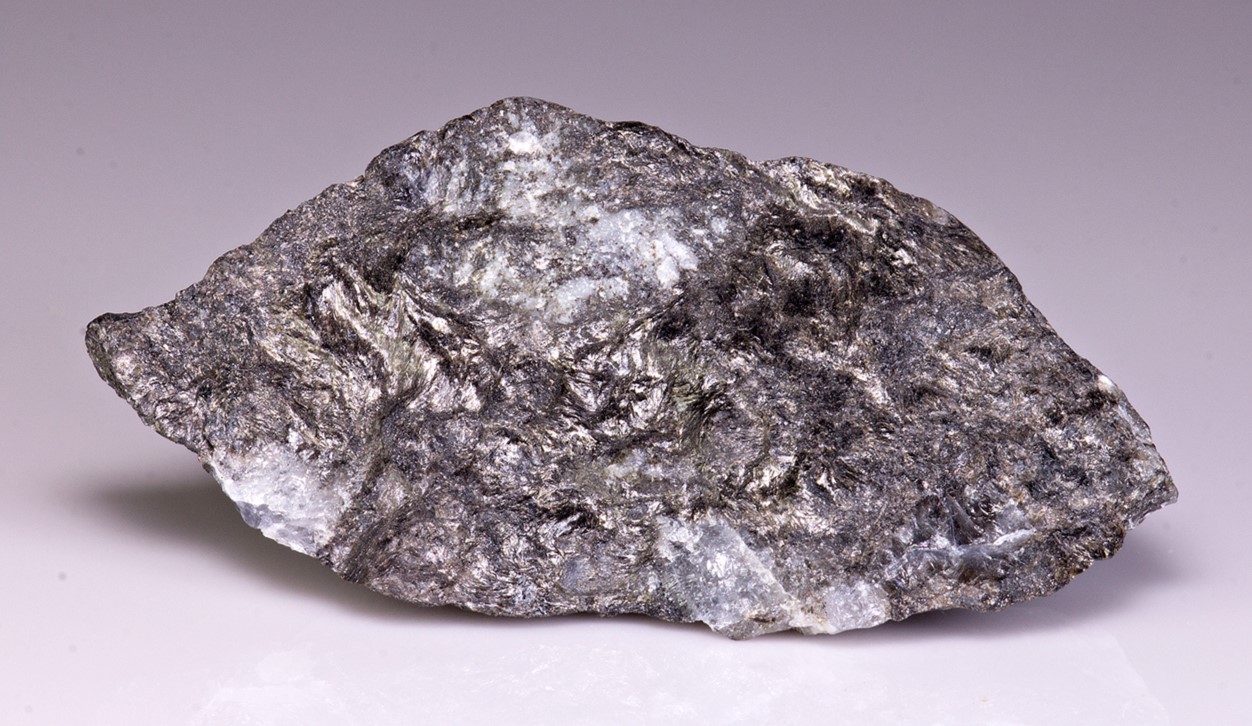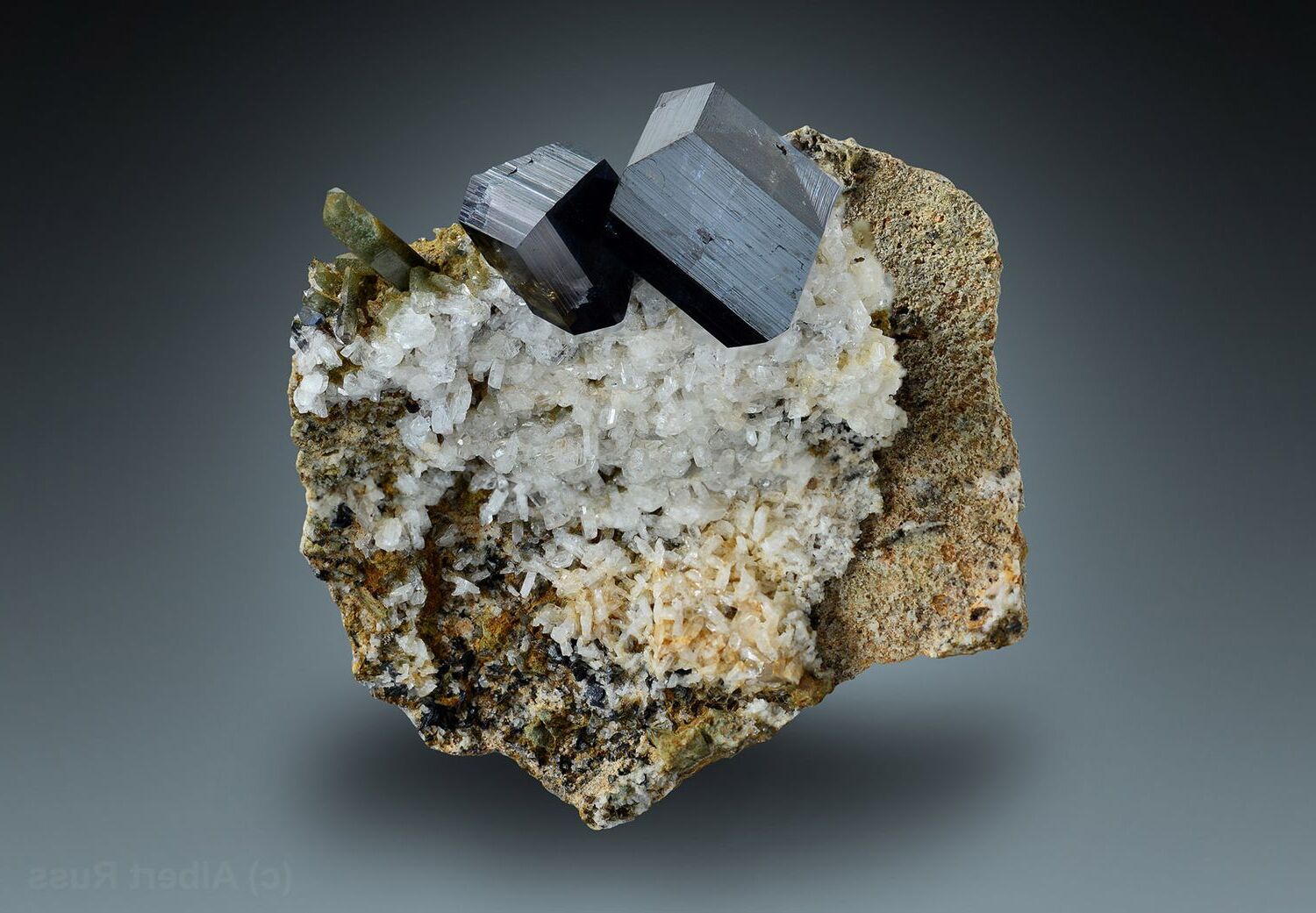
Ever heard of Anandite? This rare mineral, part of the sulfide group, is a hidden gem in the world of geology. Discovered in the 1870s in Norway, Anandite's name comes from the Sanskrit word "ananda," meaning joy or bliss. Its unique crystal structure and metallic luster make it a subject of fascination for scientists and collectors alike. Found in hydrothermal veins and metamorphic rocks, this mineral often appears alongside galena and pyrite. Though not mined commercially, Anandite's educational value and scientific significance are immense. Let's dive into 25 intriguing facts about this captivating mineral!
What is Anandite?
Anandite is a rare mineral that has fascinated geologists and collectors alike. Its unique properties and intriguing history make it a subject worth exploring. Let's dive into some fascinating facts about this mineral.
-
Definition and Classification: Anandite belongs to the sulfide group. It consists of lead, sulfur, and arsenic, with the chemical formula Pb3AsS4.
-
Discovery and History: Discovered in the 1870s in Norway's Kongsberg district, its name comes from the Sanskrit word "ananda," meaning joy or bliss.
Crystal Structure and Physical Properties
Understanding the structure and physical characteristics of anandite helps us appreciate its uniqueness.
-
Crystal Structure: Anandite crystallizes in the orthorhombic system, characterized by three unequal axes.
-
Physical Properties: It has a metallic luster and a dark gray to black color. With a density of 6.5 to 6.7 g/cm³, it is relatively heavy. Its Mohs hardness is about 3.5, making it somewhat soft.
Optical Properties and Occurrence
Anandite's optical properties and where it is found add to its intrigue.
-
Optical Properties: Anandite is opaque, meaning it doesn't transmit light. It also lacks significant fluorescence under ultraviolet light.
-
Occurrence: This mineral is primarily found in hydrothermal veins and metamorphic rocks, environments that provide the necessary conditions for its formation.
Association with Other Minerals
Anandite often occurs alongside other minerals, which can tell us more about its formation environment.
-
Association with Other Minerals: It is commonly found with galena (PbS) and pyrite (FeS2), indicating a lead-rich and iron-rich environment, respectively.
-
Geological Setting: Typically found in areas with significant tectonic activity, such as regions with volcanic activity or mountain-building processes.
Formation Process and Distribution
The formation and distribution of anandite are crucial to understanding its rarity.
-
Formation Process: Anandite forms through the interaction of hydrothermal fluids with the Earth's crust, precipitating out as these fluids cool.
-
Distribution: Found in locations like Norway, Sweden, and the United States, with significant deposits in tectonically active regions.
Mining and Industrial Uses
Despite its rarity, anandite has some mining and industrial relevance.
-
Mining and Extraction: Not commonly mined for commercial purposes, it is sometimes extracted as a byproduct of mining operations for other minerals.
-
Industrial Uses: Due to its rarity and softness, it has limited industrial applications but is used in scientific research.
Collectibility and Educational Value
Anandite's rarity makes it a prized collectible and an educational tool.
-
Collectibility: Highly prized by collectors for its rarity and unique appearance, high-quality specimens can command significant prices.
-
Educational Value: Provides valuable learning opportunities for geology and mineralogy students, helping them understand complex geological phenomena.
Cultural Significance and Scientific Research
Anandite holds cultural significance and is a subject of scientific research.
-
Cultural Significance: The name "anandite" reflects the joy and wonder of discovering new minerals, highlighting its cultural importance in mineralogy.
-
Scientific Research: Important in geochemistry and mineralogy studies, offering insights into the Earth's crust and hydrothermal activity.
Analytical Techniques and Conservation Efforts
Analyzing and conserving anandite is essential for future research and preservation.
-
Analytical Techniques: Techniques like X-ray diffraction (XRD), electron microprobe analysis (EMPA), and scanning electron microscopy (SEM) help determine its composition and structure.
-
Conservation Efforts: Responsible mining practices and proper specimen storage are crucial for preserving this rare mineral.
Public Awareness and Future Research
Raising awareness and focusing on future research can help us learn more about anandite.
-
Public Awareness: Educational programs, exhibitions, and publications can help the public understand anandite's significance and the importance of conservation.
-
Future Research Directions: Future studies should focus on its formation processes, distribution patterns, and potential applications using advanced analytical techniques.
Technological Innovations and Collaborative Efforts
Technological advancements and collaboration can enhance our understanding of anandite.
-
Technological Innovations: Advancements in 3D imaging and computational modeling can simulate anandite's formation conditions, providing deeper insights.
-
Collaborative Efforts: International collaborations can facilitate data sharing and promote responsible mining and conservation practices.
Educational Resources and Community Engagement
Developing educational resources and engaging with communities can promote interest and responsible practices.
-
Educational Resources: Textbooks, online courses, museum exhibits, and educational videos can highlight anandite's unique aspects, inspiring future scientists and collectors.
-
Community Engagement: Outreach programs can inform local communities about the benefits and risks of mining, fostering cooperation and sustainable practices.
Legacy and Impact
Anandite's legacy extends beyond its scientific significance, reflecting the human quest for knowledge and discovery.
- Legacy and Impact: The study of anandite has contributed to our understanding of the Earth's crust and the processes that shape our planet, inspiring future generations of scientists and collectors.
The Legacy of Anandite
Anandite's story is a blend of rarity, scientific intrigue, and geological wonder. This mineral, with its unique chemical composition and crystal structure, offers a glimpse into the Earth's dynamic processes. Found in hydrothermal veins and metamorphic rocks, anandite's presence hints at significant tectonic activity and complex geochemical interactions. Though not commercially mined, it holds immense value for mineral collectors and geologists alike. Its discovery in the 19th century sparked excitement, reflected in its name derived from the Sanskrit word for joy. Today, anandite continues to be a subject of scientific research, educational interest, and conservation efforts. By studying and preserving this rare mineral, we deepen our understanding of the natural world and ensure its legacy endures for future generations. Anandite isn't just a mineral; it's a testament to the Earth's ever-changing and fascinating nature.
Was this page helpful?
Our commitment to delivering trustworthy and engaging content is at the heart of what we do. Each fact on our site is contributed by real users like you, bringing a wealth of diverse insights and information. To ensure the highest standards of accuracy and reliability, our dedicated editors meticulously review each submission. This process guarantees that the facts we share are not only fascinating but also credible. Trust in our commitment to quality and authenticity as you explore and learn with us.


